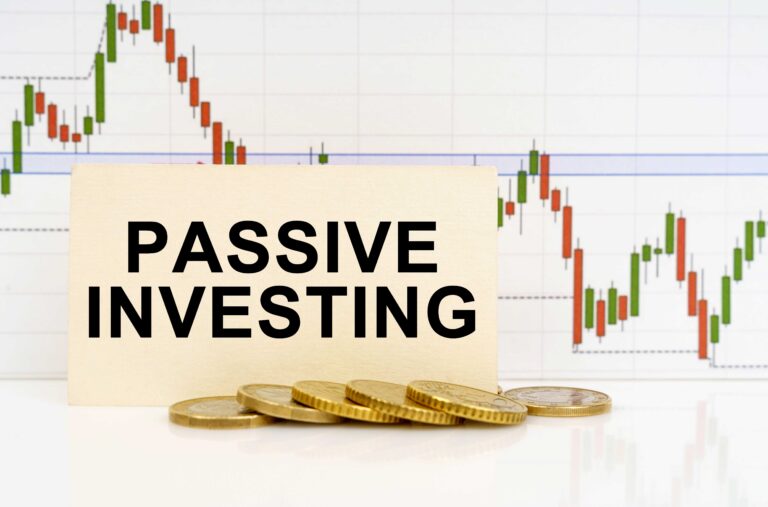
First available to investors in 1975, a passive fund aims to offer a low-cost method of replicating the performance of a specific market index, rather than actively selecting individual assets within a particular market. Over the last decade, passives have grown substantially in popularity, with Morningstar research confirming that passive funds saw higher inflows than active funds during 2023.
The rise in the popularity of passive strategies is also evident from our own market analysis. The FAS Investment Committee regularly undertakes a comprehensive review of managed portfolio solutions offered by discretionary fund managers, to ensure that we can demonstrate that MGFP clients receive good value for money. Our analysis clearly demonstrates an increasing bias towards passive investments, on which many of our competitors’ products and services are founded.
The rationale behind the increased use of passive investment funds is that the ongoing cost of a passive investment is usually cheaper than an actively managed fund. This helps passive only strategies maintain a competitive total cost of ownership. A key drawback of such an approach is that investors may be missing out on additional returns generated by strong active management. In our opinion, many portfolio managers are confusing “value for money” with “cheap”, with the focus on costs being the dominant factor.
Many investors fail to take account of two key disadvantages of a pure passive investment approach. The first is that, by definition, a passive investment will not outperform the representative index or market it is trying to replicate. Indeed, due to costs and potential tracking errors, most passives return just below the index return. As an investor, we contend that you should be seeking outperformance where possible, as long as the level of risk being taken remains commensurate with the prospects for superior returns.
A second key risk of a pure passive approach is that replicating an index will mean producing returns in line with that index. When market indices fall, the value of a passive investment tracking that index will fall by a similar amount. Unlike a fund with an active manager, who could potentially take avoiding action by reducing allocations, increasing the percentage of cash or possibly using derivatives, the passive fund will simply track the index on the way down.
Within our investment strategies, we try to seek out good value for our clients, and our independent status allows us to take an unbiased approach as to the precise blend of funds we select. This allows us to select passive funds, where this is appropriate. We will, however, also look to use active funds if we feel this is likely to result in outperformance.
The FAS Investment Committee undertake considerable research on a sector and region basis when conducting the regular review of funds that they recommend to clients. This research, which has been carried out for many years, allows them to better understand areas where passive investment is likely to be sensible, and where selecting an active investment approach may produce superior returns.
The most commonly cited example of a sector where passive investments perform well is US Equities. Our own analysis has shown that index funds that track the S&P500 index of leading US companies tend to produce consistently strong returns when compared to actively managed US Equity funds. There will, of course, be active funds that do beat the market; however, the key is whether this can be achieved on a consistent basis.
One of the main reasons for the attractiveness of passive funds in US markets is the dominance of a small number of mega-cap stocks, where performance has been positive compared to the wider index for some time. The FAS Investment Committee’s analysis concurs with research carried out by S&P Dow Jones, who suggest in their recent SPIVA report that 60% of active large-cap US Equity funds failed to beat the representative S&P500 index during 2023.
A good example of an area where passive investment has shown historic weakness is in Fixed Income investment. Whilst many investors would associate passive funds with Equity investment, a wide range of passive bond funds are now available, which track a particular UK or Global bond index, and typically replicate hundreds or potentially thousands of individual bond positions. Bond investment is an area where adopting the correct strategy can yield significant outperformance, and an active bond fund manager can alter the duration of bonds held, the credit quality and sector or geographic allocation, to try and generate superior returns over the benchmark index. These additional levers available, which can adjust the allocation within the fund, can help a skilled fund manager generate superior performance to a passive fund, which simply holds the constituents of an index.
At MGFP, we view ourselves as conviction investors, and therefore when selecting an active fund, we prefer to select an investment manager or team with a clear vision as to how their fund is to be positioned. This can often mean a concentrated portfolio, when compared to the representative region or universe of stocks available. All too often, we come across funds that employ an active manager or management team, who take an approach that allocates their portfolio closely to the benchmark index. In most instances, such funds fall between two stools, carrying high charges without the prospects for outperformance.
With the increased focus on costs across the industry, many portfolio management services are leaning towards a passive only investment approach, with the ultimate aim of highlighting a competitive pricing structure. We feel such an approach is highly inflexible and potentially means that opportunities for outperformance from active managers is being missed. We prefer adopting a hybrid strategy, using passive funds in areas where index tracking funds should perform well, combined with actively managed funds where we feel the prospects for outperformance justify the higher costs of active management.